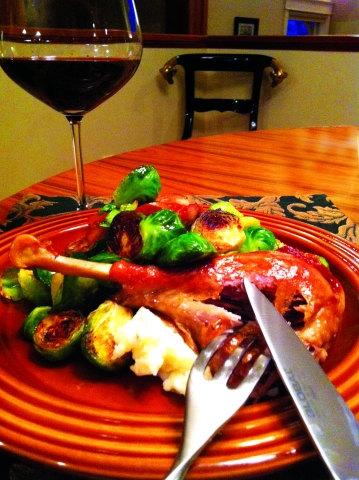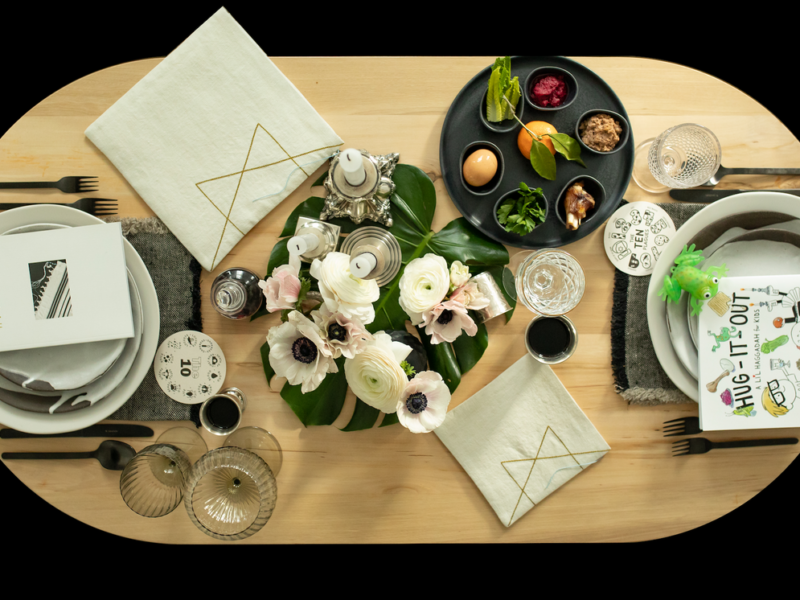Even though Thanksgiving isn’t a religious holiday, foodies like me think it is pretty close. I look forward to coming up with the menu for our Thanksgiving feast every year. As soon as the leaves begin to turn, I start poring through articles and recipes, trying to put a new spin on this holiday’s meal.
With the exception of the few years I lived out of state, I am the official “master of ceremonies” for my extended family’s Thanksgiving dinner. While I was away, my sister was left to host Thanksgiving for our family. She roasted the turkey in an oven bag, made reconstituted stuffing out of a box and served cranberry sauce from a can. I refer sadly to those years as “the lost years,” when predictable tradition and off-the-shelf convenience seemed to conspire to produce a meal that could have been found in any grocery store’s freezer section. OK, you may want to insert the term “food snob” here … guilty as charged.
Now that we are all happily reunited here in Oregon, our family is together again on Thanksgiving Day. Side by side in the kitchen, the girls and I happily sip Bloody Marys and create some seriously spectacular food.
For me Thanksgiving is not the day to make things that are quick, convenient or even healthy. It’s a day to be together, to be thankful for our good fortune and, of course, enjoy lots of delicious food – the diets can wait! We have created a new Thanksgiving tradition to help make up for all the extravagant eating: The entire family goes for a long hike on Friday!
This recipe was created to pay homage to one of my favorite food indulgences–Duck confit (pronounced “con-fee”). While living in Barcelona we were close enough to the southern border of France to make occasional day trips to little towns like Perpignan. We would stop to have a decadent lunch of cassoulet made with white beans and tender duck confit. The duck legs and thighs are slowly roasted completely submerged in their own fat, resulting in exquisite, fall-off-the-bone tender meat. If I see it on a menu anywhere, I can’t deny myself this pleasure. I wondered if that same technique could be used with turkey legs, and, happily, I was right.
Making your turkey this way is great because it allows you to have as many legs as you like, and in my family, we all want a leg. No matter how large a bird you buy, you still have only two legs, so I like to buy two smaller birds, confit the legs, thighs and wings and roast the boneless breasts separately. Think of it as carving the turkey before you roast it. And, if you ask nicely, your butcher will probably be happy to disassemble the bird(s) for you. (P.S.: you can use the leftover carcass to make the stock for gravy!) You can also find extra turkey legs packaged separately so you can make as many of these delicious shanks as you like.
Confit, a specialty in southwestern France, is a term for foods (usually the legs of duck or goose) that have been cooked totally immersed in their own fat – both for flavor and preservation. The meat is salted and seasoned with herbs and slowly cooked in the oven at a very low temperature. After the meat is cooked, it can be cooled and stored in the fat for an extended period of time, even without refrigeration. As long as the meat is totally submerged in the fat and not exposed to the air, it will keep for weeks or even months, allowing you to make this dish well in advance of Thanksgiving. No more getting up at 5 am to stuff the bird, as my mother used to do!
Duck fat can be found in good grocery stores, or ask your butcher and he can order it for you. It is also available on websites such as dartagnan.com. If you are willing to give up some of the great flavor for a bit healthier version (if you must), you can use olive oil as a substitute.
Turkey Confit
4 tablespoons salt
6 cloves garlic, smashed
2 shallots, peeled and sliced
6 sprigs fresh thyme
2 teaspoons whole black peppercorns
Grated rind of one orange
4 turkey legs
4 turkey thighs
4 turkey wings, wing tips removed
4-6 cups duck fat
Sprinkle 1 tablespoon of the salt in the bottom of a dish or plastic container large enough to hold all the turkey pieces in one single layer. Evenly scatter half of the garlic, shallots and thyme on the bottom. Arrange the turkey, skin side up, over the mixture, then sprinkle the remaining salt, garlic, shallots and thyme. Sprinkle with the whole peppercorns and grated orange rind. Cover and refrigerate overnight. Preheat the oven to 250 degrees. Melt the duck fat in a saucepan. Remove turkey from salt and spices and rinse to remove salt. Pat dry. Arrange the turkey pieces in a single layer in a high-sided roasting pan. Pour the duck fat over the turkey (the pieces should be totally submerged in fat; you can add some olive oil if necessary). Place the turkey in the oven and roast until the turkey is very tender and coming away from the bone – 2-4 hours, depending on the size of your pieces. Turkey can be cooled and stored in fat for several weeks. When ready to use, preheat oven to 400°. Remove turkey from fat and roast in hot oven until skin is crisp.
Note: Duck fat can be strained, cooled and reused.
Lisa Glickman is a private chef and teacher who lives in Bend. She has made TV appearances on COTV in Central Oregon and recently appeared on the Cooking Channel’s The Perfect Three. She can be reached at [email protected].






